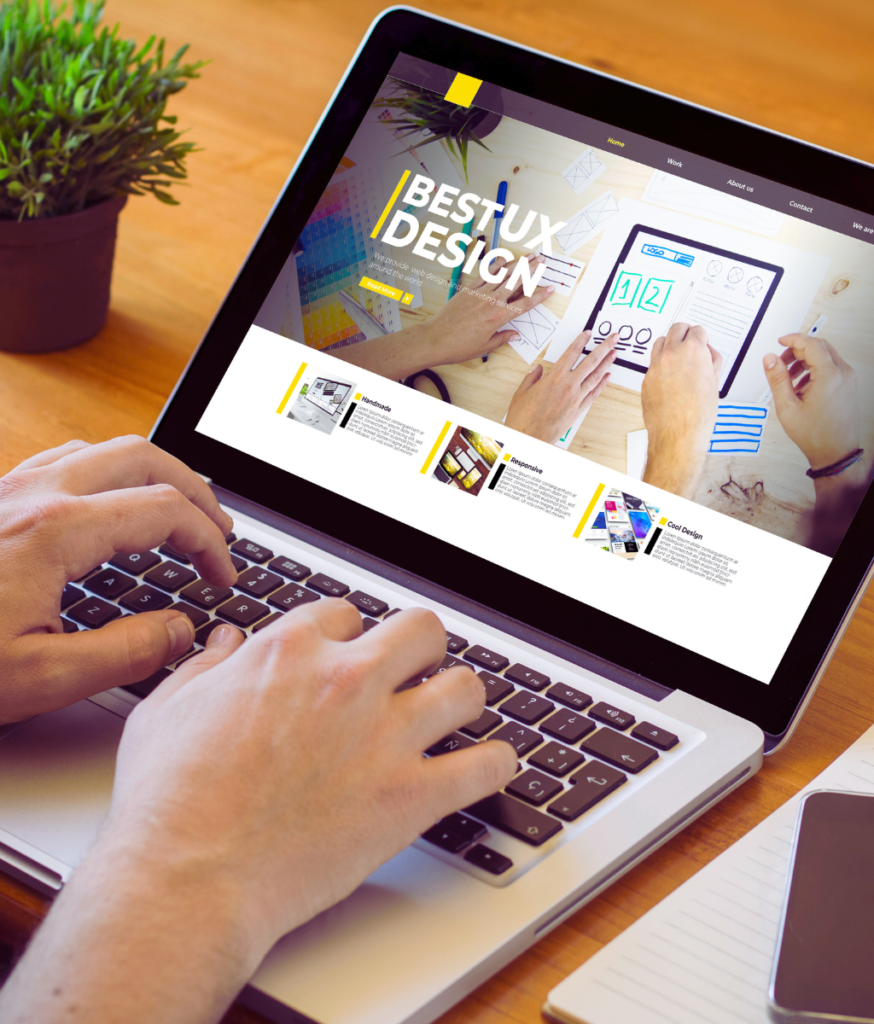Best Practices for Creating User-Friendly Web Layout
In the ever-evolving landscape of web design, developing an user-friendly user interface is vital for involving audiences and driving conversions. As we explore these foundational concepts, it comes to be clear that reliable customer experience style not only meets user expectations yet also sets the stage for much deeper involvement.
Simplify Navigating
A structured navigation system is important for enhancing user experience on any kind of internet site. Reliable navigating enables customers to discover the details they look for quickly and easily, thus decreasing aggravation and boosting the probability of interaction. A clear layout that classifies web content practically is critical; customers need to with ease comprehend where to click for specific info.
Employing an easy top-level navigation bar, matched by drop-down food selections for subcategories, help in maintaining an arranged structure. It is important to limit the variety of main navigation web links to prevent overwhelming individuals; normally, five to seven choices are optimum. In addition, employing descriptive tags improves quality, allowing individuals to recognize the content of each section at a glimpse.
Incorporating a search function even more enriches the navigating experience, particularly for content-rich sites. This feature empowers customers to bypass typical navigation paths when seeking details information. Furthermore, consistent style elements throughout all web pages enhance experience, enabling customers to navigate with confidence.
Optimize for Mobile

Firstly, adopt a receptive style method that automatically changes the layout and content based upon the screen dimension. This versatility makes sure that users have a consistent experience across devices. Next, prioritize touch-friendly user interfaces by ensuring switches and web links are easily clickable, reducing the need for zooming.
Additionally, take into consideration the importance of concise material presentation. Mobile individuals often look for fast information, so employing techniques like retractable menus or accordions can enhance functionality without frustrating the individual. Additionally, guarantee that fonts are clear, and photo dimensions are maximized for faster loading.
Last but not least, test your website on different mobile phones and operating systems to determine potential issues. By addressing these components, you will certainly develop an user-friendly mobile experience that maintains customers involved and encourages them to discover your offerings further - Web Design Pretoria. Focusing on mobile optimization is essential for accomplishing an user-friendly web layout in a significantly mobile-centric globe
Enhance Loading Rate
Filling speed is an essential factor that can significantly impact customer complete satisfaction and interaction on a site. Researches indicate that customers expect pages to fill in 2 seconds or less; past this threshold, the chance of desertion boosts significantly. Enhancing loading rate is crucial for preserving site visitors and improving general website performance.
To boost filling rate, numerous best methods ought to be carried out. Initially, enhance photos by compressing them without sacrificing top quality, which can dramatically reduce file dimensions. In addition, take advantage of internet browser caching to store copies of documents locally, enabling faster lots times for returning site visitors. Minifying CSS, JavaScript, and HTML files can likewise help by removing unnecessary personalities and areas, thereby their explanation decreasing the quantity of code that requires to be refined.

Usage Consistent Design Elements
Developing a cohesive aesthetic identity is vital for enhancing user experience on an internet site. Consistent style components, consisting of shade schemes, typography, buttons, and layout frameworks, produce a unified appearance that helps individuals navigate easily. When individuals experience acquainted patterns and designs, their cognitive load is decreased, permitting them to concentrate on content rather than deciphering varying design elements.
Making use of a standardized color palette reinforces brand recognition and cultivates a psychological link with users. In a similar way, maintaining consistent typography-- such as font designs, dimensions, and weights-- guarantees readability and adds to a polished appearance. Additionally, uniform button designs and interactive elements assist individuals without effort with the site, improving usability.
Moreover, a cohesive format assists establish an arranged flow of info, making it much easier for customers to situate and digest content. Each web page should reflect the same layout principles to stop complication and disorientation.
Prioritize Accessibility
A natural visual identification not just boosts navigation yet additionally sets the phase for focusing on availability in website design. Access makes certain that all users, including those with specials needs, can browse and interact with a website effectively. To accomplish this, internet designers should stick to developed guidelines, such as the Internet Content Ease Of Access Standards (WCAG)
Applying attributes like alt text for photos, keyboard navigability, and suitable color contrast can dramatically boost the customer experience for individuals with aesthetic, acoustic, or cognitive problems. It is vital to make use of semantic HTML to framework web content logically, enabling assistive technologies to translate and convey details properly to individuals.
Furthermore, offering numerous methods of interaction-- such as text alternatives for audio and visual web content-- can deal with varied customer requirements. Normal use testing with individuals who have handicaps can uncover possible barriers that might not be promptly noticeable during the layout phase.
Ultimately, prioritizing availability not only follows legal standards however additionally widens the possible audience, fosters inclusivity, and improves total site use (Web Design Pretoria). By embedding availability into the design procedure, developers official source can create a much more equitable electronic landscape for everybody
Conclusion

As we explore these foundational concepts, it ends up being clear that effective customer experience design not only satisfies individual expectations yet likewise establishes the phase for deeper involvement. Mobile customers usually look for quick details, so using strategies like collapsible menus or accordions can improve usability without overwhelming the user. When customers experience acquainted patterns and styles, their cognitive load is lowered, allowing them to focus on material rather than decoding varying layout aspects.
In summary, carrying out finest techniques for straightforward web layout substantially enhances the total individual experience. Adhering to these standards promotes a favorable relationship in between individuals and digital systems, inevitably promoting user satisfaction and retention.